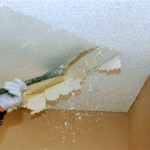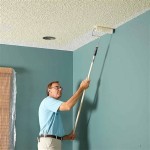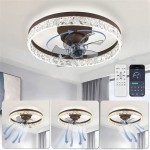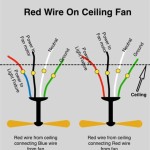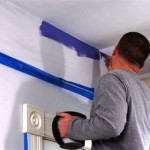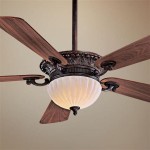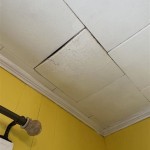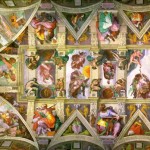Ceiling Plates: An Essential Component of Light Fixtures
Ceiling plates, sometimes referred to as canopies or ceiling medallions, are vital components in the installation and aesthetic presentation of light fixtures. They serve both functional and decorative purposes, contributing to the secure mounting of the fixture and enhancing the overall visual appeal of the lighting design. Understanding the types, functions, and installation considerations of ceiling plates is crucial for anyone involved in lighting installation or interior design.
The primary function of a ceiling plate is to conceal the electrical wiring and mounting hardware that connect a light fixture to the ceiling’s junction box. This creates a clean and professional appearance, preventing unsightly wires from being visible. Beyond aesthetics, the ceiling plate also provides a stable and secure connection point, ensuring the light fixture remains safely affixed to the ceiling. Furthermore, ceiling plates can contribute to the overall style of a room, complementing the design elements and enhancing the ambiance.
Types of Ceiling Plates
Ceiling plates are available in a wide variety of materials, shapes, sizes, and finishes, allowing for customization and compatibility with a range of light fixtures and interior design styles. Choosing the appropriate type of ceiling plate is dependent on factors such as the weight and style of the fixture, the existing ceiling structure, and the desired aesthetic effect.
Material: The material of the ceiling plate impacts its durability, appearance, and cost. Common materials include:
Metal: Metal ceiling plates are robust and offer a variety of finishes, such as brushed nickel, chrome, brass, and oil-rubbed bronze. They are often used for modern and contemporary designs due to their sleek appearance and durability. Metal plates are generally resistant to corrosion and can withstand significant weight, making them suitable for heavier light fixtures.
Plastic: Plastic ceiling plates are a more affordable option and are lightweight, making them easy to install. They are available in a wide range of colors and finishes, although they may not offer the same level of durability or aesthetic appeal as metal plates. Plastic is a non-conductive material, which can be advantageous in certain installations.
Wood: Wood ceiling plates add a touch of warmth and natural beauty to a space. They are often used in rustic or traditional designs and can be stained or painted to match the surrounding décor. Wood plates should be properly sealed to prevent moisture damage and may not be suitable for use in damp environments.
Plaster/Gypsum: Plaster or gypsum ceiling plates are often found in decorative ceiling medallions. These are typically more ornate and can add architectural interest to a room. They are often painted to match the ceiling color and can be quite fragile, requiring careful installation.
Shape and Size: The shape and size of a ceiling plate should be proportional to the light fixture and the surrounding ceiling area. Common shapes include:
Round: Round ceiling plates are the most common type and are suitable for a wide range of light fixtures. They offer a clean and simple aesthetic.
Square: Square ceiling plates provide a more angular and modern look. They are often used with contemporary light fixtures.
Rectangular: Rectangular ceiling plates are typically used for linear light fixtures, such as track lighting or pendant lights arranged in a row.
Decorative: Decorative ceiling plates come in a variety of shapes and styles, often featuring intricate designs or patterns. These are used to add visual interest and can be customized to match a specific design theme.
The size of the ceiling plate should be large enough to fully cover the junction box and any associated mounting hardware. It should also be proportional to the size of the light fixture to create a balanced and aesthetically pleasing appearance.
Style and Finish: The style and finish of the ceiling plate should complement the light fixture and the overall design of the room. Common finishes include:
Brushed Nickel: Offers a soft, warm metallic tone that complements a variety of design styles.
Chrome: Provides a bright, reflective surface that is often used in modern and contemporary settings.
Brass: Offers a classic and elegant look that is often used in traditional designs.
Oil-Rubbed Bronze: Provides a dark, rich finish that adds a touch of warmth and sophistication.
White: A neutral finish that blends seamlessly with most ceilings and is suitable for a variety of design styles.
Black: A bold finish that provides a modern and dramatic look.
Functions of Ceiling Plates
While the aesthetic contribution of a ceiling plate is significant, its functional roles are equally important. A well-chosen ceiling plate contributes to safety, stability, and ease of maintenance for the light fixture.
Concealing Wiring and Hardware: The primary function of a ceiling plate is to conceal the electrical wiring and mounting hardware that connect the light fixture to the junction box. This creates a clean and professional appearance, preventing unsightly wires from being visible. A properly installed ceiling plate ensures that all electrical connections are safely enclosed and protected from damage.
Providing a Secure Mounting Point: The ceiling plate provides a stable and secure connection point for the light fixture. It distributes the weight of the fixture evenly across the ceiling, preventing it from sagging or becoming detached over time. The mounting hardware is typically attached to the junction box, which is securely anchored to the ceiling structure. The ceiling plate then covers the mounting hardware, creating a seamless and aesthetically pleasing finish.
Supporting Weight: The ceiling plate must be capable of supporting the weight of the light fixture. The appropriate type of ceiling plate should be chosen based on the weight of the fixture. Heavier fixtures may require reinforced ceiling plates or additional support structures to ensure they are securely mounted. It is important to consult the manufacturer's specifications for the weight capacity of the ceiling plate.
Aesthetic Enhancement: The ceiling plate contributes to the overall aesthetic appeal of the light fixture and the room. It can be used to complement the design of the fixture or to add a decorative element to the ceiling. The style, finish, and shape of the ceiling plate can be chosen to match the existing décor or to create a contrasting focal point.
Facilitating Maintenance: The ceiling plate allows for easy access to the electrical connections for maintenance or repairs. By simply removing the ceiling plate, the wiring and mounting hardware can be accessed without having to disassemble the entire light fixture. This simplifies the process of changing bulbs, troubleshooting electrical issues, or making other necessary repairs.
Installation Considerations
Proper installation of a ceiling plate is essential for ensuring the safety and stability of the light fixture. It is important to follow the manufacturer's instructions carefully and to take appropriate safety precautions when working with electrical wiring. It is always recommended to consult a qualified electrician if you are unsure about any aspect of the installation process.
Safety Precautions: Before starting any electrical work, it is essential to turn off the power to the circuit at the breaker box. This will prevent the risk of electric shock. Use a voltage tester to ensure that the circuit is de-energized before touching any wires. Wear appropriate safety gear, such as insulated gloves and eye protection.
Compatibility with Junction Box: The ceiling plate must be compatible with the existing junction box in the ceiling. The junction box must be securely mounted to the ceiling structure and be of the appropriate size and type for the light fixture being installed. If the existing junction box is not suitable, it may need to be replaced with a more compatible model.
Mounting Hardware: The ceiling plate should come with all the necessary mounting hardware, such as screws, brackets, and wire connectors. Ensure that the hardware is of the correct size and type for the junction box and the light fixture. Use the appropriate tools for tightening the screws and connectors to ensure a secure connection. Do not overtighten screws, as this can damage the ceiling plate or the junction box.
Wiring Connections: Connect the electrical wires from the light fixture to the wires in the junction box, following all applicable electrical codes and regulations. Use wire connectors to securely join the wires, ensuring that there are no exposed wires. Ground the light fixture by connecting the ground wire from the fixture to the ground wire in the junction box. This will help to prevent electric shock in the event of a fault.
Securing the Ceiling Plate: Once the wiring connections are complete, carefully position the ceiling plate over the junction box, aligning it with the mounting holes. Secure the ceiling plate to the junction box using the provided screws. Ensure that the ceiling plate is flush with the ceiling and that there are no gaps or exposed wires. If necessary, use shims to level the ceiling plate and ensure a secure fit.
Testing the Installation: After the ceiling plate is securely installed, turn the power back on at the breaker box. Test the light fixture to ensure that it is working properly. If the fixture does not turn on, check the wiring connections and the light bulb. If the fixture flickers or makes unusual noises, turn the power off immediately and consult a qualified electrician.
Aesthetic Considerations: Ensure that the ceiling plate is properly aligned and that it complements the style of the light fixture and the room. Consider using decorative elements, such as ceiling medallions or decorative trim, to enhance the appearance of the ceiling plate. Clean the ceiling plate regularly to keep it looking its best.

Multi Point Canopy 12 In 5 Light Brushed Nickel Round Ceiling Plate Cp1205r Bn The Home

Ceiling Light Fixing Plates About Space Lighting

Ceiling Canopy Base For Pendant Light Rufat Lights

Ceiling Plate 1 Shop Now About Space Lighting

Ceiling Plate For Chandeliers And Lighting Fixtures Diy Black Metal Wood Handmade Etsy

New Diy Decorative Embossed Steel Ceiling Canopy Plate In 6 Finishes Pendant Light Fixture Mounting Kit Hardware Included Etsy

White Square Ceiling Plate For 1 Phase Track System Iconic Lampandlight Ie

Eglo Accessory

Ceiling Plate 1 Shop Now About Space Lighting

Round White 1 Phase Ceiling Plate Track System Iconic Lampandlight Ie

